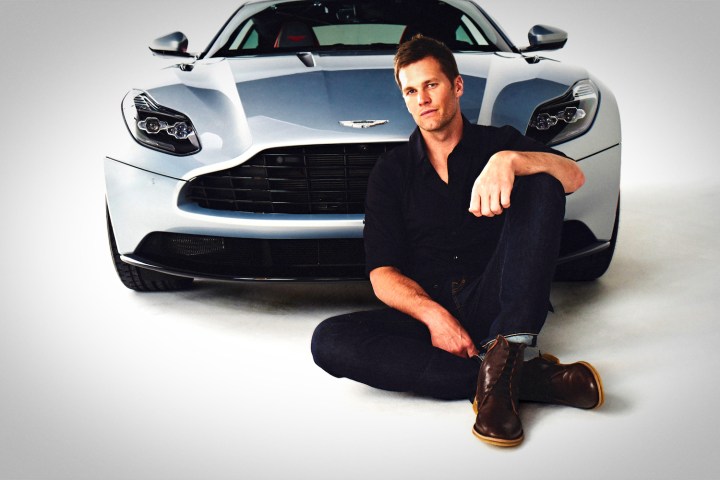
But which sports star would be the right mate for an exclusive automaker like Aston Martin? The British car brand known for its gorgeous designs and raucous V12 engines wouldn’t settle for just any pro — it would have to be someone highly accomplished. The winningest quarterback in NFL history might do.
Yes, Tom Brady, five-time Super Bowl champion, four-time MVP, and part-time model will enter into a long-term partnership with Aston Martin. Apart from the irony that Brady — whose professional career was spent with the New England Patriots — is now teamed up with a British company, the collaboration is highly complementary.
Brady is a long-time fan and owner of Aston Martin products and will sync up on the company’s mantra: “For the love of beautiful.” Drawing upon his experiences on the field and his impressions of beauty in daily life, Brady will help steer Aston Martin’s new content series, “Category of One.”
“Tom is an inspirational leader and athlete who is clearly aligned with our view of Aston Martin,” said Aston Martin’s Vice President and Chief Creative Officer Marek Reichman. In addition to Brady’s work on the new marketing campaign, the football pro will help design a custom 2018 Aston Martin Vanquish S. The project will be revealed in segments over the next several months.
“Aston Martin exemplifies dedication to the craft of car making through a meticulous attention to detail,” Brady said. We suppose someone with precision in football mechanics would be able to spot precision in car making. All the inspiration he will ever need is parked in his garage: The 2017 Aston Martin DB11.


